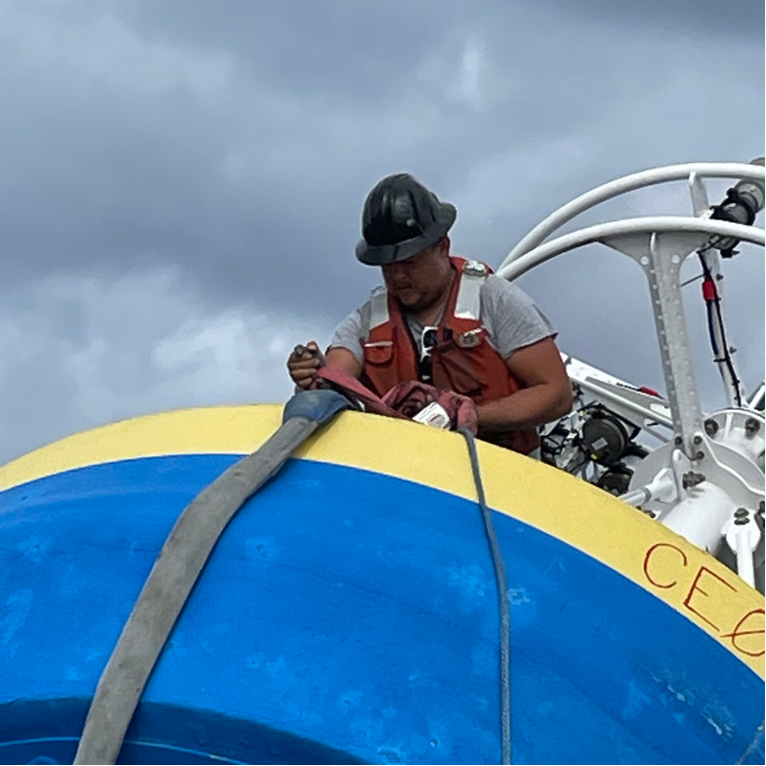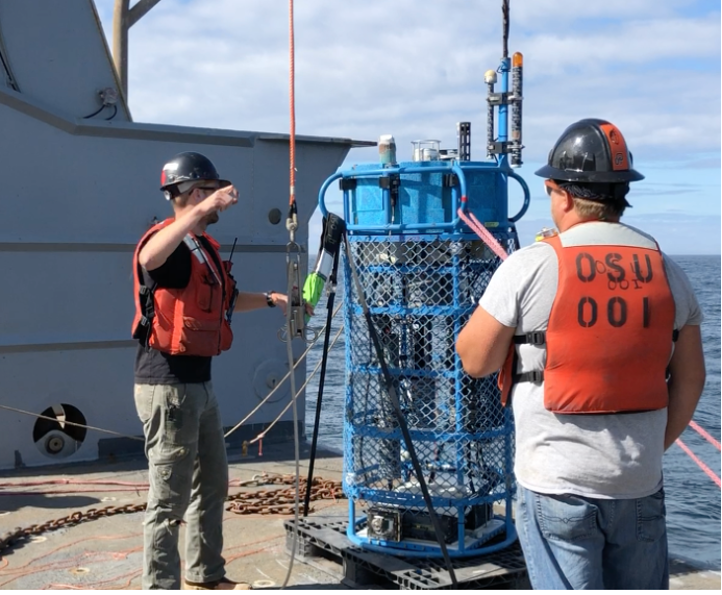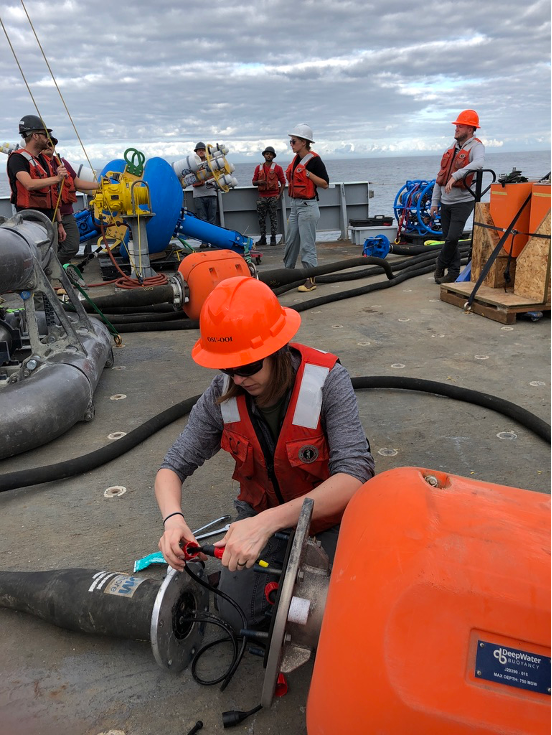Two moorings, two gliders, topped with a CTD
As my mother-in-law would say, today on the R/V Thomas G. Thompson was chock-a-block full. We arrived at the Washington Shelf Site around 11 am and immediately set to work. The first task at hand was to deploy the Washington Shelf Surface Mooring, a huge 8,000-pound, 20-foot-high buoy. The instrumented anchor, called the MFN or multi-function node, sits on the bottom at around 87 meters depth and adds another 12,000 pounds to the configuration.

The buoy is lifted using slings (applied below by Team Member Jeffrey Michael Wood) that are connected to the A-Frame which lifts it off the boat. Team members guide this huge buoy with tag lines to ensure it stays in place and can be gently lowered into the water. In short, it is a very orchestrated affair.

After the surface mooring’s successful deployment, the Team turned its attention to the deployment of the Washington Shelf Surface Piercing Profiler mooring. This mooring is an open caged structure that houses a full array of instruments. The structure allows for the sampling of near surface phenomena as the Profiler travels up through the water and breaches the surface. Fine resolution sampling of the water column, particularly at the very surface of the water, provides key insights into the production of phytoplankton and the exchange of gases between the atmosphere and the ocean. While on the surface, the profiler transmits data to shore.

After a brief break, the Team set about multi-tasking on the rear deck. They spent a large part of the afternoon assembling the pieces for tomorrow’s big launch of the Washington Offshore Surface Mooring, another 8,000-pound behemoth.

Somehow, they found the time, interspersed between assembly tasks, to launch two gliders . The gliders will stay in the water for the next three months, providing invaluable information about conditions in the water column from the coast to the edge of the continental shelf in this extremely productive and economically important area.
After re-arranging the deck to make tomorrow’s launch easier, the ship’s crew launched a CTD (conductivity, temperature, and depth) Rosette. Conductivity is a proxy for salinity. The water samples collected by the Rosette will be used to validate oxygen, nutrients, chlorophyll, and dissolved carbon dioxide concentrations measured by instruments on the gliders and moorings.